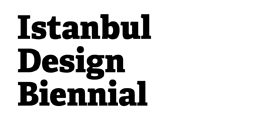
Promiscous Encounters, 23 March 2012, NY – Image by Felicity D.Scott
Promiscuous Encounters – Addressing/Assessing Adhocracy
November 3rd, 2012 14:00-18:00
Venue: Galata Greek School
Departing from the Adhocracy “Open Call” statement, Promiscuous Encounters will launch four questions to deploy a conversation. An open discussion will take the form of a roundtable with invited speakers from multiple backgrounds. Everyone attending the event is invited to actively engage in the conversation. In our first encounter, we examined the interplay between the critical, curatorial and conceptual capacities of architecture, as well as when and where an architectural practice is subject to an inevitable and productive promiscuity. With this second iteration of Promiscuous Encounters, we are putting into practice a promiscuous mode of operation by interfering in the Istanbul Design Biennial as a site of criticality. Invisibility, Design, Value and Commons will be under discussions.
Program
14:00 – Greetings / Opening Remarks
Pelin Tan / Joseph Grima
Questions
Francisco Díaz, Nina Valerie Kolowratnik, Marcelo López-Dinardi, Marina Otero Verzier
14:20 – Seminar Statements
Ethel Baraona Pohl, Ute Meta Bauer, Boğaçhan Dündarlp, Joseph Grima, Nikolaus Hirsch, Ömer Kanipak, Erhan Öze, Felicity D. Scott, Pelin Tan, Mark Wasiuta.
16:30 – Closing Remarks
All Participants (incl. Audiences)
The Promiscuous Encounters is organized by Critical, Curatorial and Conceptual Practices MA program – Graduation School of Architecture, Planning and Preservation – Columbia University and Adhocracy Curatorial Team (Asst. Prof. Dr. Pelin Tan, New Media Dept., Faculty of Communication, KHAS University, Istanbul) – 1. Istanbul Design Biennial

















